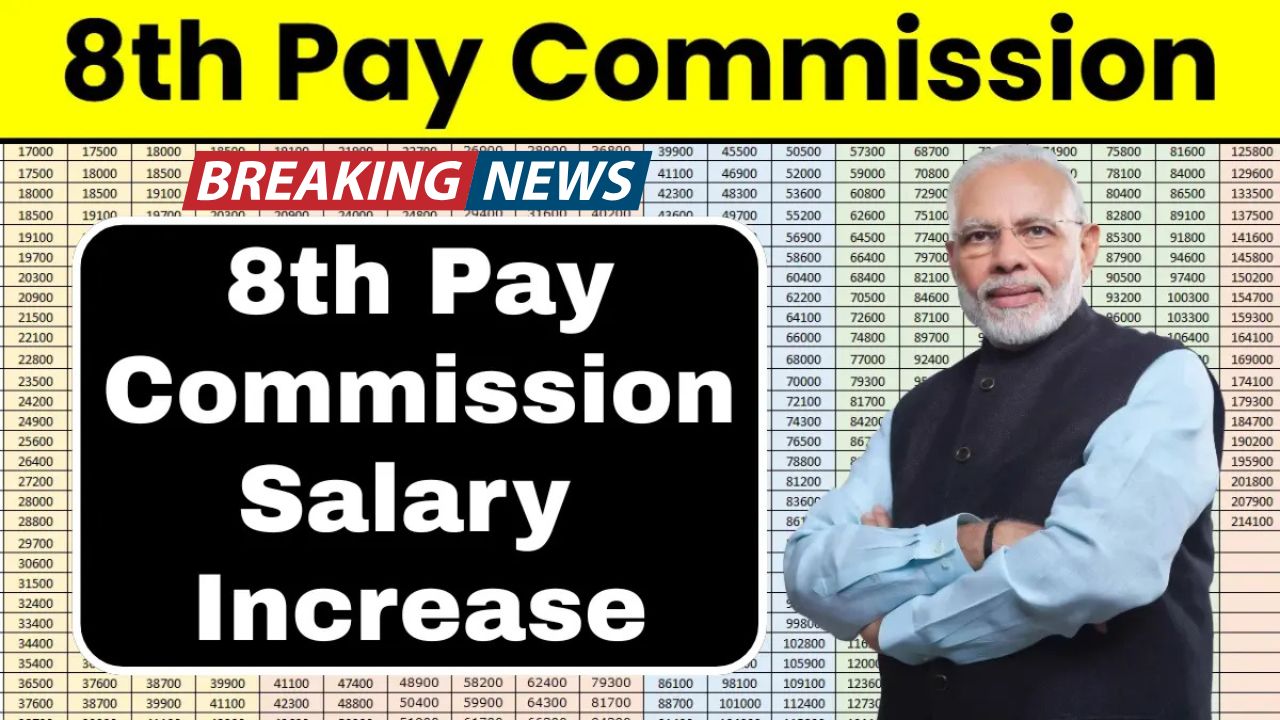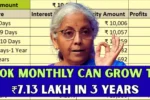Central government employees and pensioners have been awaiting the formation and recommendations of the 8th Pay Commission-a-routine exercise that updates pay scales roughly every decade.
The last 7th Pay Commission had come into force with effect from January 1, 2016, and since, the cost of living, inflation, housing, and other charges have been steadily increasing. With these pressures increasing, the government has given its approval for the constitution of the 8th Pay Commission so that salaries, allowances, and pensions conform to present-day economic realities.
While the official notification of many details is still awaited, several reports and analyses have begun to suggest what lies ahead for the employees and retirees.
The Fitment Factor and Its Importance
Among the major factors for changing salaries and pensions under a Pay Commission is the fitment factor. Essentially, it is the ratio by which the existing basic pay is multiplied for arriving at a proposed new basic pay under the new pay commission.
The fitment factor used by the 7th Pay Commission was 2.57, raising the minimum basic pay to ₹18,000 from the earlier level. For the 8th Pay Commission, the fitment factor is expected by many analysts to go up to about 2.86, while some are of opinion that conservative numbers like 2.28 may also be taken into consideration depending on fiscal space constraints and inflation projections.
This alteration in the multiplier is the trigger for how steeply salary increases will be effected at various levels of pay.
How Salaries and Pensions are Projected to Increase
With a fitment factor of 2.86, it is being reported that salary increments under the 8th Pay Commission may bring about an increase in the minimum basic salary for central government employees to the tune of about ₹51,480 against the current rate of ₹18,000 (Under 7th CPC).
A figure of about 51,480 signifies a nearly threefold increase in the lowest pay level-basic pay. Simultaneously, the pension of pensioners drawing minimum pension under the 7th Pay Commission, presently at ₹9,000, are said to be enhanced to almost ₹25,740, if under the same fitment factor as well.
These remain estimates, and the real figures could differ depending on whether the Government decides one way or the other, the fitment factor finally approved, adjustment of various allowances like Dearness Allowance (DA), House Rent Allowance (HRA), and Travel Allowance (TA) among others.
Changes to Allowances, Deductions, and Other Components
Alongside changes in basic pay and pension are expected to come revision of allowances. Dearness Allowance adjusts for inflation, House Rent Allowance (city-based), Travel Allowance, and others would be recalculated on a basis of the new basic pay.
With basic pay increases, deductions related to contributions to the National Pension System, and health scheme charges (e.g., CGHS) will go up, which then may impact net takeaway pay. Pensioners may also witness changes to various pension-linked benefits, and commutation may depend on the new 8th Pay Commission rules.
Timeline, Uncertainty, and What to Watch For
While many reports and experts’ opinions lean toward implementation starting from the 1st of January, 2026, whether this will bear true is still an uncertainty. The government has given its approval to the concept of the 8th Pay Commission, but forming the commission, finalizing Terms of Reference, estimating budgetary implications, and rolling out the new pay structure take a considerable amount of time. One can expect delays.
It also remains to be seen if the fitment factor, which is at present being expected, will carry through to be the one finally approved, which would then change how much salary and pension increase has been projected. Official notifications, union updates, and drafts of revised pay matrices would be important to follow for any employee or pensioner.
What This Signifies for Government Employees and Pensioners
For employees at the lowest pay level, this pay revision could mean an uplift that changes their lives and eases the financial pressure of living in cities with high rents and living costs. The pensioners will also be immensely benefited, especially those who live on a minimum pension.
But since a larger pay and pension will bring with it larger contributions toward pension schemes, it may result in bigger tax liabilities and deductions. For mid- and top-tier pay levels, though percentage increases may be comparable, actual increases largely depend on their position in the pay matrix, the allowances they receive, and how these get revised.
Conclusion
A salary and pension hike that is expected from the 8th Pay Commission is more than just numbers on paper. It is about how a government begins to acknowledge changing economic conditions, rising costs, and the needs of its workforce and retirees.
Looking at the provisional figures, the present minimum basic pay that is pegged at ₹51,480 and the minimum pension figure at ₹25,740 paint a hopeful picture for many of what represents a fair and meaningful reform. The moment implementation starts taking shape, employees and pensioners will have to stay informed so they are capable of planning for the change into their monthly pocket.




